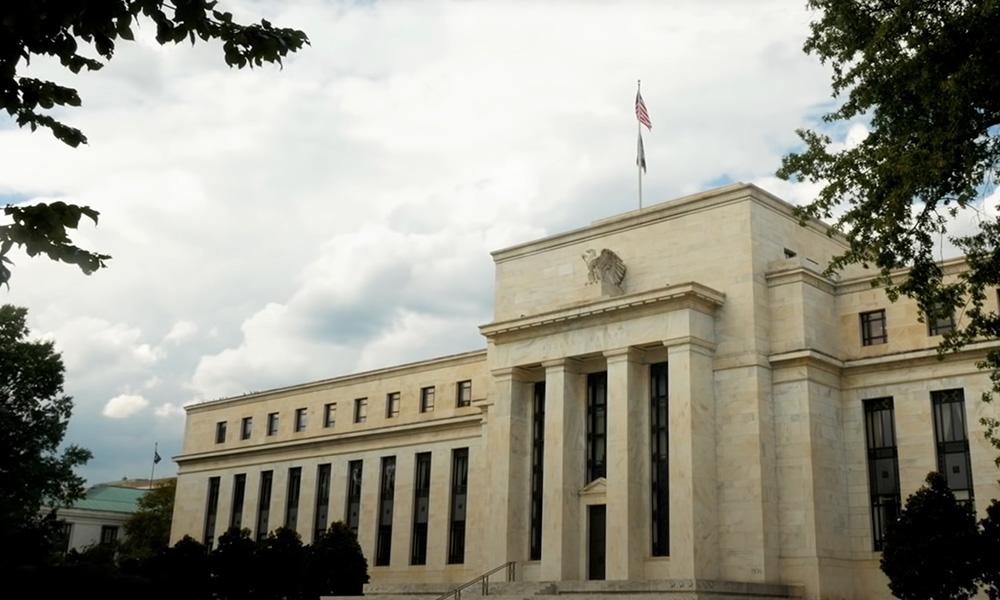Is a September rate cut a foregone conclusion? The Treasury Secretary hints at a 50 basis point cut, and the list of Fed chair candidates expands to 11.
2025-08-14 08:43:19

Market expectations: There is almost no doubt that the interest rate cut will take place in September
According to the Chicago Mercantile Exchange (CME) FedWatch tool, market expectations for a September Federal Reserve interest rate cut reached a staggering 99.9% following the release of the Bureau of Labor Statistics' July Consumer Price Index (CPI) data. This data reflects strong market confidence that the Fed will cut interest rates by at least 25 basis points at its September 16-17 meeting. The July CPI data showed moderate inflation in the United States, with the pace of price increases gradually slowing, providing room for the Federal Reserve to adjust its monetary policy. Even more striking, U.S. Treasury Secretary Bessent explicitly stated in an interview with Bloomberg Television that, given recent weak employment data, the Fed may need to cut interest rates even more significantly, perhaps even by 50 basis points at once.
Bessant further argued that the current federal funds rate (4.25%-4.5%) is overly restrictive and could put unnecessary pressure on the economy. He suggested lowering the rate by 150 to 175 basis points, bringing it closer to the so-called neutral rate (around 3%), the balance point that neither stimulates the economy nor suppresses growth. This statement not only continues the Trump administration's tradition of pressuring the Federal Reserve but also fuels market debate about the extent of rate cuts.
Weak job market: the direct driver of interest rate cuts
Recent developments in the job market have become a significant factor driving expectations of rate cuts. Data from the U.S. Bureau of Labor Statistics show a significant slowdown in job growth in May, June, and July. Revisions to preliminary figures for May and June, in particular, indicate a deeper weakening of the job market than previously anticipated. Bessant emphasized that if these revised figures had been available in June and July, the Federal Reserve might have already cut interest rates. This suggests that the likelihood of a 50 basis point rate cut at the September meeting is rapidly increasing.
At the same time, changes in the unemployment rate also inform the Federal Reserve's decisions. The unemployment rate rose by approximately 0.75 percentage points in 2024 compared to the previous year, and although it has remained relatively stable since then, the slowdown in job growth has prompted Fed officials to reassess the health of the labor market. The Fed has consistently emphasized supporting a strong job market while controlling inflation. However, the current weak employment data clearly complicates this balance.
Powell and the Jackson Hole Central Bank Annual Meeting: A preview of interest rate cut signals?
Federal Reserve Chairman Powell is expected to deliver a keynote speech at the Jackson Hole central bank symposium in Wyoming next week. Last year, at the same event, he clearly hinted at an impending rate cut, pledging to support the labor market while achieving price stability. Markets are now widely expecting Powell's speech to provide clearer guidance on a September rate cut. Analysts believe Powell is likely to continue to emphasize the Fed's reliance on economic data while paving the way for looser monetary policy.
It is worth noting that Powell's speech is not only about policy direction, but also closely related to his personal leadership. Powell's current term will end in May 2025, and discussions about his successor are heating up, which undoubtedly adds more political color to the Fed's future decision-making.
The list of presidential successors has expanded to 11: Political jockeying intensifies
Amid market speculation about rate cuts, the question of the Federal Reserve Chair's successor has also become a hot topic. The US government is reportedly searching for a successor to Powell, and the list of potential candidates has swelled from the three or four mentioned by Trump a few days ago to 11. This expanded list includes the two Fed Vice Chairs, Jefferson and Bowman, current Governor Waller, Dallas Fed President Logan, and Trump's Chief Economic Advisor, Hassett. In addition, there are several candidates from the private sector.
Trump said late Wednesday that he was currently considering only three or four candidates, calling them "very good." However, the 11-name list confirmed by White House officials suggests the pool of candidates is much wider than expected. Stephen Miran, the current chairman of the White House Council of Economic Advisers, has been nominated to fill a vacant seat on the Federal Reserve Board of Governors. However, Bessant made it clear that even if Miran is confirmed by the Senate, he is unlikely to remain at the Fed beyond his term in January 2026. This seat could make room for Trump's nominee for Powell's successor.
Inflation and tariffs: potential headwinds to rate cuts
Despite growing calls for rate cuts, inflation remains a key concern for the Federal Reserve. Currently, US price increases remain above the Fed's 2% target, and the potential tariffs introduced by the Trump administration are expected to push prices higher. Citi analysts point out that, to date, nearly all of the tariff costs have been borne by domestic businesses and have not yet been fully passed on to consumers. This has somewhat alleviated the Fed's concerns about persistently high inflation, opening up room for rate cuts.
However, Federal Reserve officials remain cautious about inflation. They are reluctant to prematurely declare victory in the fight against inflation, especially given the potential short-term price increases caused by tariffs. Some officials have become more concerned about the risk of rising unemployment and believe the Fed needs to act preemptively by cutting interest rates to prevent further deterioration in the labor market. In a recent speech, Fed Vice Chairman for Supervision Bowman stated that proactively shifting policy from a restrictive to a neutral stance would help avoid unnecessary labor market deterioration and reduce the likelihood of larger policy adjustments in the future.
Political Pressure and Fed Independence: Benson's Controversial Remarks
Bessant's radical proposal for a rate cut sparked widespread controversy. His proposal of a 3% rate cut was more modest than Trump's target of 1%, but still far exceeded market expectations. Bessant's comments continued the Trump administration's tradition of openly criticizing the Federal Reserve's independence, exacerbating external pressure on the central bank in its policymaking.
Looking back at 2024, Trump criticized the Fed's decision to cut interest rates, calling it politically motivated, especially with the November presidential election approaching. After three consecutive rate cuts in September, November, and December 2024, the Fed chose to hold rates steady. This decision was considered at the time to balance the dual goals of inflation and employment. Now, with weak employment data and easing inflationary pressures, the Fed's policy balance appears to be tilting toward easing.
Future Outlook: The Pace of Interest Rate Cuts and Economic Trends
Overall, the probability of a Federal Reserve rate cut in September is near 100%, with the magnitude and subsequent pace of the cuts becoming key market focus. Bessant's bold prediction supports a 50 basis point cut, but market expectations for a larger cut remain divided. Citi analysts believe the market may be underestimating the likelihood of a faster or larger Fed rate cut, especially given continued labor market weakness.
Meanwhile, the battle for the Federal Reserve chairman's successor has added uncertainty to future monetary policy. The new chair's policy preferences will directly impact the Fed's strategy for balancing inflation, employment, and economic growth. Furthermore, the Trump administration's tariff policy is likely to push up prices in the short term, testing the Fed's ability to strike a balance between interest rate cuts and controlling inflation.
Growing expectations of a 50 basis point rate cut by the Federal Reserve in September, coupled with weak economic data and a potential policy shift, are expected to significantly boost gold prices. A rate cut would depress the US dollar and real interest rates, increasing gold's appeal as a zero-yielding asset. Meanwhile, economic uncertainty and potential stagflation risks will further fuel safe-haven demand. If the Fed exceeds expectations by cutting by 50 basis points, gold prices could begin a new round of gains. However, if the policy intensity falls short of expectations, a short-term technical correction is possible. In the medium to long term, the global monetary policy easing cycle and central bank gold purchasing demand will continue to support gold prices. In the short term, attention should also be paid to news related to geopolitical developments and international trade.
- Risk Warning and Disclaimer
- The market involves risk, and trading may not be suitable for all investors. This article is for reference only and does not constitute personal investment advice, nor does it take into account certain users’ specific investment objectives, financial situation, or other needs. Any investment decisions made based on this information are at your own risk.





















